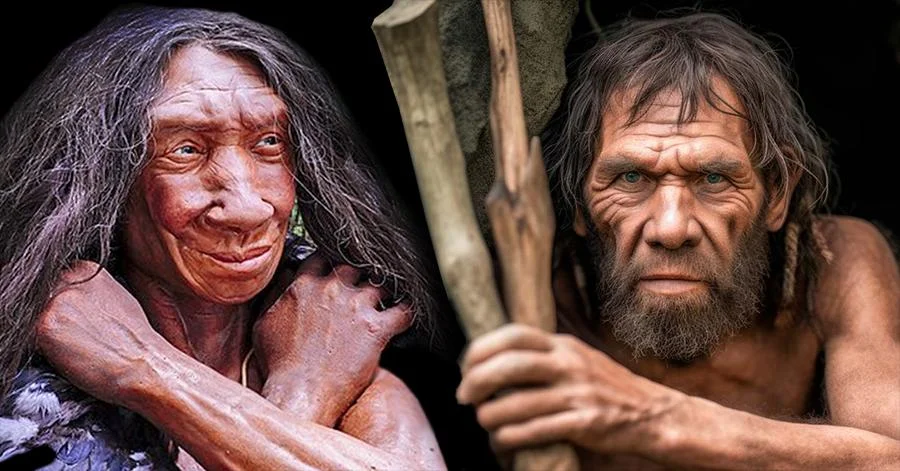Shocking Discovery: Neanderthal-Human Interbreeding Unveiled
In a remarkable twist in human history, scientists have uncovered startling evidence of Neanderthal-human interbreeding that stretches back tens of thousands of years. This revelation not only reshapes our understanding of human evolution, but it also challenges everything we thought we knew about our ancient ancestors. Could it be that Neanderthals and humans were more intertwined than history books suggest? Let’s delve into this groundbreaking discovery and explore its incredible implications.
If you’re fascinated by engaging discoveries like this, check out more updates at ZEX News.
Table of Contents
- The Origin of the Discovery
- The Science Behind Neanderthal-Human Interbreeding
- What This Means for Modern Humans
- Why This Matters: A Humanity-Defining Moment
The Origin of the Discovery
It all began with an astonishing breakthrough in DNA analysis. Researchers, using state-of-the-art genome sequencing, uncovered undeniable evidence that early humans and Neanderthals not only coexisted but interbred as well. The study, which spans millennia, revealed that interbreeding occurred over 40,000 years ago, leaving an indelible genetic imprint that persists to this day.
Neanderthals, often caricatured as brutish and primitive, were in fact surprisingly similar to modern humans. According to Wikipedia, Neanderthals shared many behavioral and cultural traits with early Homo sapiens, ranging from tool-making to ceremonial burial practices. This suggests that the two species were not only capable of cooperating but also of forming intimate connections that shaped the very fabric of human ancestry.
The Science Behind Neanderthal-Human Interbreeding
How did researchers confirm the existence of Neanderthal-human interbreeding? The key lies in the analysis of our genetic makeup. Scientists examined ancient DNA alongside modern human genomes and found shared sequences that could only have arisen from interbreeding events.
Advances in Genome Sequencing
Advancements in genome sequencing techniques allowed scientists to identify genetic markers unique to Neanderthals. When cross-referenced with contemporary human DNA, these markers showed consistent overlap, particularly in non-African populations. This overlap indicates that early humans and Neanderthals likely cohabited on multiple occasions, resulting in genetic exchange.
Unexpected Discoveries in Ancient DNA
One of the most fascinating revelations was the discovery of genetic traits that persist in modern humans. For instance, some immune system genes associated with fighting specific infections are believed to have been inherited from Neanderthals. This means that those ancient unions played a crucial role in shaping our ability to survive and adapt.
What This Means for Modern Humans
The implications of Neanderthal-human interbreeding go far beyond academic interest. This discovery rewrites the narrative of human evolution and challenges long-held assumptions about our ancestors. Here’s how this knowledge affects us today:
Your Neanderthal Heritage
Did you know that if you trace your lineage back far enough, you could carry Neanderthal genes? Researchers estimate that non-African populations carry 1-2% Neanderthal DNA. While this may seem like a small fraction, it has profound implications for understanding traits like immunity, skin tone, and even certain psychological characteristics.
Genetic Benefits and Drawbacks
Neanderthal genes have contributed to our modern immune systems, enhancing resistance to certain diseases. However, not all is positive—a study published in Nature revealed that some inherited traits may predispose individuals to conditions such as allergies or depression. Understanding these genetic influences can help scientists address health challenges more effectively.
Why This Matters: A Humanity-Defining Moment
The discovery of Neanderthal-human interbreeding is about more than just genetics—it’s a reminder of our shared humanity. By learning about our intertwined past, we gain a deeper appreciation for the rich diversity that defines us as a species.
Breaking Down Stereotypes
Historically, Neanderthals were often depicted as dim-witted and inferior to modern humans. This discovery shatters that misconception, showcasing their sophistication and adaptability. They were not “lesser” beings but rather vital contributors to our collective story.
Bridging the Gap Between Past and Present
Understanding our genetic heritage allows us to connect more deeply with our ancestors. It’s fascinating to think that qualities we consider uniquely human—curiosity, creativity, and resilience—were shaped by a blend of Homo sapien and Neanderthal traits.
This remarkable discovery isn’t just a story about ancient history; it’s a celebration of the resilience and interconnectedness of life itself. If Neanderthals and humans could come together in a challenging and unpredictable world, perhaps there’s a lesson here about unity and collaboration that we can carry into the future.
Conclusion
The revelation of Neanderthal-human interbreeding is truly a profound moment in our understanding of human history. It underscores the delicate and complex interplay that gave rise to modern humans, reminding us just how remarkable our existence is. By embracing our shared past, we can look forward to a future that values inclusivity, diversity, and the endless possibilities of discovery.
For more groundbreaking stories and updates, make sure to visit ZEX News.
“`






1 Comment